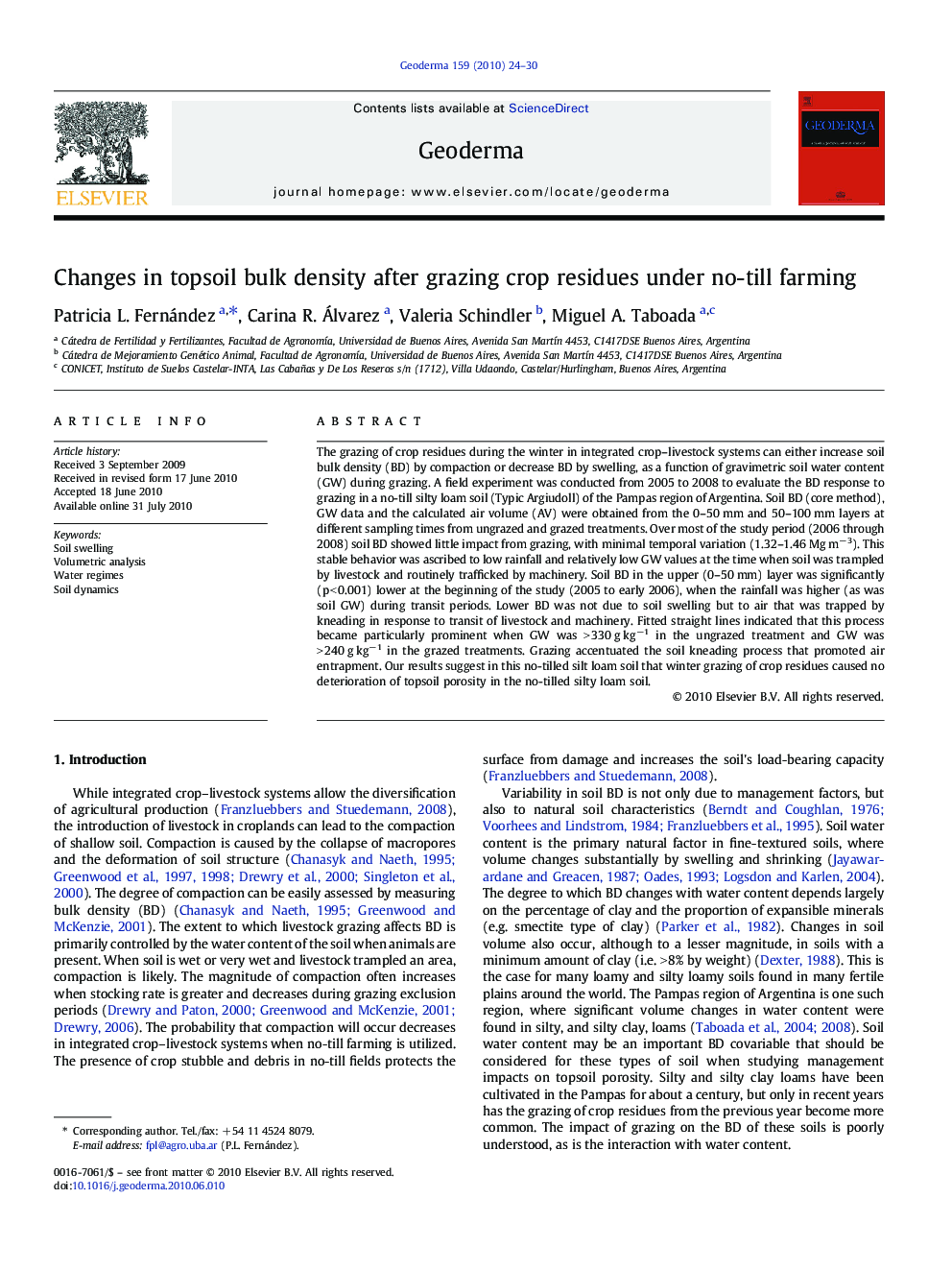| Article ID | Journal | Published Year | Pages | File Type |
|---|---|---|---|---|
| 4574527 | Geoderma | 2010 | 7 Pages |
The grazing of crop residues during the winter in integrated crop–livestock systems can either increase soil bulk density (BD) by compaction or decrease BD by swelling, as a function of gravimetric soil water content (GW) during grazing. A field experiment was conducted from 2005 to 2008 to evaluate the BD response to grazing in a no-till silty loam soil (Typic Argiudoll) of the Pampas region of Argentina. Soil BD (core method), GW data and the calculated air volume (AV) were obtained from the 0–50 mm and 50–100 mm layers at different sampling times from ungrazed and grazed treatments. Over most of the study period (2006 through 2008) soil BD showed little impact from grazing, with minimal temporal variation (1.32–1.46 Mg m−3). This stable behavior was ascribed to low rainfall and relatively low GW values at the time when soil was trampled by livestock and routinely trafficked by machinery. Soil BD in the upper (0–50 mm) layer was significantly (p < 0.001) lower at the beginning of the study (2005 to early 2006), when the rainfall was higher (as was soil GW) during transit periods. Lower BD was not due to soil swelling but to air that was trapped by kneading in response to transit of livestock and machinery. Fitted straight lines indicated that this process became particularly prominent when GW was > 330 g kg−1 in the ungrazed treatment and GW was > 240 g kg−1 in the grazed treatments. Grazing accentuated the soil kneading process that promoted air entrapment. Our results suggest in this no-tilled silt loam soil that winter grazing of crop residues caused no deterioration of topsoil porosity in the no-tilled silty loam soil.
Research highlights►Soil bulk density decreased in the top 50 mm when the wet soil was treaded on in winter. This bulk density decreases was caused by trapping of air and a concomitant increase in air volume. The process was also observed, albeit to a lesser extent, in the ungrazed treatment. ►A stable behavior of bulk density related to livestock trampling and machinery traffic was found during periods of low rainfall. Grazing crop residues during winter under no till farming caused no deterioration of topsoil porosity in the studied silty loam soil.
